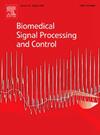T-CADiff: Conditional guidance based diffusion model for medical image segmentation
IF 4.9
2区 医学
Q1 ENGINEERING, BIOMEDICAL
引用次数: 0
Abstract
Diffusion models receive particular attention in the field of medical image segmentation due to their excellent quality and good image diversity. However, there are still some urgent issues remaining. Diffusion models used for image segmentation require the original image to guide generation, and the semantic features of the original images are often misaligned with the features of noisy segmentation masks, affecting the realism of the generated images. Meanwhile, most existing studies based on diffusion models still rely on the classic UNet structure, which does not fully utilize global information. To address the above issues, the model includes a condition guidance transformer (CGT) module to fuse features of the original images and noisy segmentation masks and learn global information. In addition to noise prediction, the real mask is also predicted and subsequently fed into a discriminator to increase the accuracy of predicted noise and the realism of the segmentation images. On the ISIC 2016 skin lesion segmentation dataset, our model achieved 11.04, 85.35%, 91.51%, 90.93%, and 95.63% on the HD95, IoU, Dice, sensitivity, and accuracy, respectively. It can be demonstrated that the proposed model significantly enhances segmentation accuracy, outperforming the state-of-the-art models.
t - cadff:基于条件引导的医学图像分割扩散模型
扩散模型以其优良的质量和良好的图像多样性在医学图像分割领域受到广泛关注。然而,仍存在一些亟待解决的问题。用于图像分割的扩散模型需要原始图像来引导生成,原始图像的语义特征往往与噪声分割蒙版的特征不一致,影响生成图像的真实感。同时,现有的大多数基于扩散模型的研究仍然依赖于经典的UNet结构,没有充分利用全局信息。为了解决上述问题,该模型包括条件引导变压器(CGT)模块,用于融合原始图像和噪声分割掩模的特征并学习全局信息。除了对噪声进行预测外,还对真实掩模进行预测,并将其送入鉴别器中,以提高预测噪声的准确性和分割图像的真实感。在ISIC 2016皮肤病变分割数据集上,我们的模型在HD95、IoU、Dice、灵敏度和准确率上分别达到11.04、85.35%、91.51%、90.93%和95.63%。可以证明,所提出的模型显著提高分割精度,优于最先进的模型。
本文章由计算机程序翻译,如有差异,请以英文原文为准。
求助全文
约1分钟内获得全文
求助全文
来源期刊

Biomedical Signal Processing and Control
工程技术-工程:生物医学
CiteScore
9.80
自引率
13.70%
发文量
822
审稿时长
4 months
期刊介绍:
Biomedical Signal Processing and Control aims to provide a cross-disciplinary international forum for the interchange of information on research in the measurement and analysis of signals and images in clinical medicine and the biological sciences. Emphasis is placed on contributions dealing with the practical, applications-led research on the use of methods and devices in clinical diagnosis, patient monitoring and management.
Biomedical Signal Processing and Control reflects the main areas in which these methods are being used and developed at the interface of both engineering and clinical science. The scope of the journal is defined to include relevant review papers, technical notes, short communications and letters. Tutorial papers and special issues will also be published.
 求助内容:
求助内容: 应助结果提醒方式:
应助结果提醒方式:


